A quality pair of mountain bike gloves is an essential piece of kit for most riders. As the primary control contact point between you and your bike, finding a well-fitting pair of gloves that suits your riding style, environment, and needs is important for comfort and protection out on the trail.
With gloves made for hot weather, cold weather, and ranging from thin and minimalist to beefy and protective, there are a dizzying number of options on the market to suit varying needs and preferences. But with so many brands and styles to choose from, finding the right mountain bike gloves can be a challenge.
To help, we gathered a diverse selection of 19 models and tested them for months, and in some cases years, to find the best gloves for every rider, riding style, and weather condition. So, whether you’re looking for a lightweight and breathable model for mid-summer riding, something with knuckle protection, or gloves to keep your hands warm during cool fall, winter, and spring rides, we’ve tested them and selected our favorites.
Our top mountain bike glove recommendations are listed below, followed by the best of the rest which are all great options in their own right. To see all of the models we tested at a glance, check out our comparison chart. Our buying advice includes information to help you decide what you need, and we provide answers to common questions in our FAQ section.
Editor’s Note: This guide originally appeared on our sister site BikeRumor.com. It was published on GearJunkie on May 21, 2024.
The Best Mountain Bike Gloves of 2024
Best Super-Lightweight Mountain Bike Gloves
-
Very lightweight and thin -
Stays cool -
Superb touchscreen functionality -
Great bar grip -
Comfortable cuff
-
No silicone grip patches on the thumb or brake finger, can be a little slippery on untextured levers. Fine on textured paddles/levers. -
Slightly more difficult to pull on -
Light, thin materials seem less durable
Best Midweight Mountain Bike Gloves
-
MSRP
$40 -
Weight
74 g (size L) -
Type
Midweight, light protection -
Knuckle protection
TPU and neoprene on outer 3 knuckles -
Touchscreen compatibility
Yes
-
Comfortable fit -
Light protection on outer 3 knuckles and outer palm -
Reinforced palm and thumb in high-wear areas -
Works relatively well with touchscreens -
Durable
-
Can feel a bit warm on super-hot days
Best Protective Mountain Bike Gloves
-
MSRP
$75 -
Weight
60 g (size S) -
Type
Protective -
Knuckle protection
Airflex impact gel over knuckles and two outer fingers -
Touchscreen compatibility
Yes
-
Great venting and breathability for a glove with so much protection -
Nicely contoured and articulated palm -
Great bar feel thanks to “Nanogrip” palm material -
Airflex padding provides lots of hand protection -
Sizeable wipe on back of thumb
-
More expensive -
Can be difficult to pull on with sweaty hands.
Best Cool Weather Mountain Bike Gloves
-
MSRP
$60 -
Weight
43 g (size S) -
Type
Cool weather, wind blocking -
Knuckle protection
No -
Touchscreen compatibility
Yes
-
Thin, very good dexterity for a cold weather glove -
GORE-TEX Infinium blocks wind and provides enough warmth for all but the coldest days -
GORE-TEX Infinium breathes extremely well -
Great bar grip from silicone patches at base of fingers -
Water-repellant
-
Not insulated enough for below freezing temperatures -
Velcro wrist closure is thin fabric, can be difficult to open -
Not waterproof, nor do they claim to be
Best of the Rest
Runner-Up Best Protective Mountain Bike Gloves
-
MSRP
$50 -
Weight
54 g (size S) -
Type
Protective -
Knuckle protection
D30 knuckles and outer back of hand -
Touchscreen compatibility
Kinda
-
Flexible D30 knuckle padding provides a good amount of protection -
D30 padding extends along outside back of hand -
Very tacky grip with silicone texturing on palm, fingers, and thumb -
Easy to put on and take off with Velcro wrist closure
-
A little baggy in the palm -
Mediocre touchscreen functionality -
Silicone palm texture may feel too grippy for some
Runner-Up Best Lightweight Mountain Bike Gloves
-
MSRP
$40 -
Weight
28 g (size S) -
Type
Lightweight minimalist -
Knuckle protection
No -
Touchscreen compatibly
Yes
-
Lightweight and thin -
Precision fit -
Good fingertip execution -
Comfortable cuff -
Dry very quickly
-
Difficult to get on -
Not super breathable; they’re thin but they get sweaty
Runner-Up Best Midweight Mountain Bike Gloves
-
MSRP
$45 -
Weight
60 g (size S) -
Type
Midweight glove with knuckle protection -
Knuckle protection
TPU on 3 outer knuckles -
Touchscreen compatibility
No
-
Comfortable -
Easy to put on and take off -
Small amount of TPU protection moves freely and is great for overgrown trails -
Great grip from silicone on palm and brake fingers
-
Run slightly large -
Don’t work well with touchscreens
Great for Fall and Spring Riding
-
MSRP
$40 -
Weight
71 g (size L) -
Type
Cool weather, wind blocking -
Knuckle protection
No -
Touchscreen compatibility
Yes
-
Reasonable price -
Great for cool temperatures -
Wind blocking -
Work with touchscreens -
Extended cuff fits nicely under jacket cuffs
-
Bulky fingers make typing on a touchscreen difficult -
Too warm for temperatures above 60° F
-
MSRP
$45 -
Weight
64 g (size S) -
Type
Cool weather, insulated -
Knuckle protection
No -
Touchscreen compatibility
Yes
-
Long, thin cuff works slides under jacket cuffs -
Great balance of insulation, warmth, and breathability -
Great dexterity -
Well-designed palm and tacky bar, brake, and shifter grip from silicone patches -
Reasonably breathable for a winter glove
-
Long cuff doesn’t work well with smartwatches -
Not quite as water-resistant as some other cool-weather models -
Touchscreen compatibility isn’t great
Affordable and Great for Cold Weather Riding
-
MSRP
$35 -
Weight
62 g (size S) -
Type
Cold weather, insulated -
Knuckle protection
No -
Touchscreen Compatibility
Yes
-
Good touchscreen compatibility for a thicker winter glove -
Neoprene cuff with Velcro closure is tight and keeps the cold out -
Insulated softshell back is very warm and provides solid water resistance -
Tacky bar grip from silicone letters on palm -
Affordable
-
Baggy palm limits grip on the handlebars -
Heavy branding
A Classic All-Around Glove and Good Value
-
MSRP
$30 -
Weight
35 g (size S) -
Type
Lightweight trail glove -
Knuckle protection
No -
Touchscreen compatibility
Yes
-
Unique Velcro placement and low profile cuff makes on/offs easy and is very comfortable -
Low-profile silicone grip patches balance tacky and natural grip feels well -
Large nose wipe -
Touchscreen finger tips work well
Great for Trail Work
-
MSRP
$45 -
Weight
66 g (size S) -
Type
Trail work gloves -
Knuckle protection
Synthetic leather -
Touchscreen compatibility
Yes
-
Soft, comfortable, classic -
Well-ventilated, great for trail (or yard) work on a hot day -
Dries fairly quickly -
Easy to put on and take off -
Better for riding in than Kincos
-
Not our favorite riding glove due to roomy fit -
Gets soaked through very quickly
-
MSRP
$50 -
Weight
54 g (size S) -
Type
Protective -
Knuckle protection
D30 over knuckles -
Touchscreen compatibility
Yes
-
TruFeel internal silicone texture and Clarino palm give exceptionally natural and reliable grip -
Under-the-thumb Velcro wrist closure placement is out of the way, secure, and comfortable -
CORDURA backing is comfortable and dries quickly
-
This style of D30 padding is uncomfortable against the knuckles
-
MSRP
$49 -
Weight
84 g (size S) -
Type
Cold weather, insulated -
Knuckle protection
No -
Touchscreen compatibility
Yes, on thumb
-
The warmest glove we tested -
Faux leather palm gives great natural grip feel on the bars -
Silicone on index and middle finger provide tacky brake lever grip -
Tight, low-profile wrist cuff keeps the cold out
-
Liner is difficult to worm into with wet or sweaty hands -
Work poorly with touchscreens due to bulkiness -
Limited temperature bandwidth
Mountain Bike Gloves Comparison Chart
| Glove Model | MSRP | Weight | Glove Type | Knuckle Protection |
|---|---|---|---|---|
| Dakine Covert | $32 | 44 grams (L) | Lightweight | No |
| 100% Sling | $40 | 27 grams (S) | Ultralight | No |
| Dakine Cross-X | $40 | 74 grams (L) | Midweight w/ light protection | Yes, TPU and neoprene on outer knuckles |
| Leatt MTB 4.0 Lite | $75 | 60 grams (S) | Protective | Yes, Airflex impact gel |
| Gorewear C5 Gore-Tex Infinium | $60 | 43 grams (S) | Cool-weather, insulated | No |
| Handup ColdER Weather | $36 | 81 grams (L) | Cold-weather, insulated | No |
| Endura MT500 D30 | $50 | 54 grams (S) | Protective | Yes, D30 |
| Gorewear TrailKPR | $40 | 28 grams (S) | Lightweight | No |
| Handup Most Days | $29 | 46 grams (L) | Lightweight | No |
| Endura Singletrack | $40 | 60 grams (S) | Midweight w/ light protection | Yes, TPU on outer knuckles |
| Specialized Trail Thermal | $40 | 71 grams (L) | Cool-weather, wind-blocking | No |
| Fox Ranger Fire | $45 | 64 grams (S) | Cool-weather, wind-blocking | No |
| 100% Brisker | $35 | 62 grams (S) | Cold Weather, insulated | No |
| Fox Ranger | $30 | 35 grams (S) | Lightweight | No |
| Pearl Izumi Pulaski | $45 | 66 grams (S) | Trail work gloves | No |
| Race Face Trigger | $30 | 45 grams (S) | Lightweight | No |
| Fox Defend D30 | $50 | 54 grams (S) | Protective | Yes, D30 |
| Race Face Conspiracy | $49 | 84 grams (S) | Cold weather, insulated | No |
Why You Should Trust Us
The cycling team at GearJunkie collectively has well over a century of riding experience, and we’ve spent most of that time riding with mountain bike gloves. Sure there are some days we’ve forgotten the gloves at home or chosen to ride without them, but we almost always wear gloves when we’re riding. And, we’ve learned that the right pair of gloves can play a major role in our comfort, add protection, and help us maintain a good grip on the bars for maximum control.
For this Buyer’s Guide, we rounded up 19 different mountain bike glove models with a diverse selection of styles, materials, protection levels, and insulating properties. Two testers, Jeremy Benson and Paul Clauss put these gloves through their paces and collaborated to create this review. Jeremy has been mountain biking for over 30 years and has been testing mountain bikes and accessories professionally for over 7 years.
He lives near Lake Tahoe, Calif., where he rides in the full spectrum of temperature and weather conditions, and knows the importance of having the right gloves to match. He has personally tested more than 30 pairs of gloves and enjoys putting products through the wringer while scrutinizing their design and performance. In addition to gloves, Jeremy has tested all kinds of cycling gear, from accessories like bike locks and bike lights to tools like bike repair stands and hitch bike racks.
Paul lives on the other side of the country in northern Vermont, where the temperature varies as wildly as the weather and the trail conditions are ever-changing. Paul has been hard at work testing a variety of products for our buyer’s guides this year, and his love of riding and mechanical engineering background make him great at analyzing products and finding their strengths and weaknesses.
Along with gloves, Paul has tested and reviewed the best mountain bike flat pedals, flat pedal shoes to go along with them, dropper posts, bike pumps, mountain bike jackets, and accessories like mountain bike hip packs.
How We Tested Mountain Bike Gloves
After looking over nearly every model on the market, we gathered a diverse selection of 19 models to test and compare. Each pair was weighed before taking a close look at the design, materials, construction, and stitching. At home, we put each model on to examine the out-of-the-box fit and comfort as well as the ease of getting the gloves on and off in a controlled environment.
Most importantly, we took each model to the trails and rode in them for weeks, and some models for multiple seasons, to test their grip, bar feel, dexterity, breathability, and comfort when used in the real world. For the protective models, we took note of padding placement and the level of protection, as well as the comfort of the pads in use.
For the cool weather models, we tested them on crisp early morning rides, cool to cold fall days, and some light rain showers to determine how well they kept our hands warm, their ideal temperature ranges, and how well they work while riding. We also tested features like touchscreen compatibility, silicone grippers, velcro cuffs, and nose wipes to see how functional and useful they actually are. After extensive testing, we zeroed in our our favorites and those that stand out in specific ways compared to the rest.
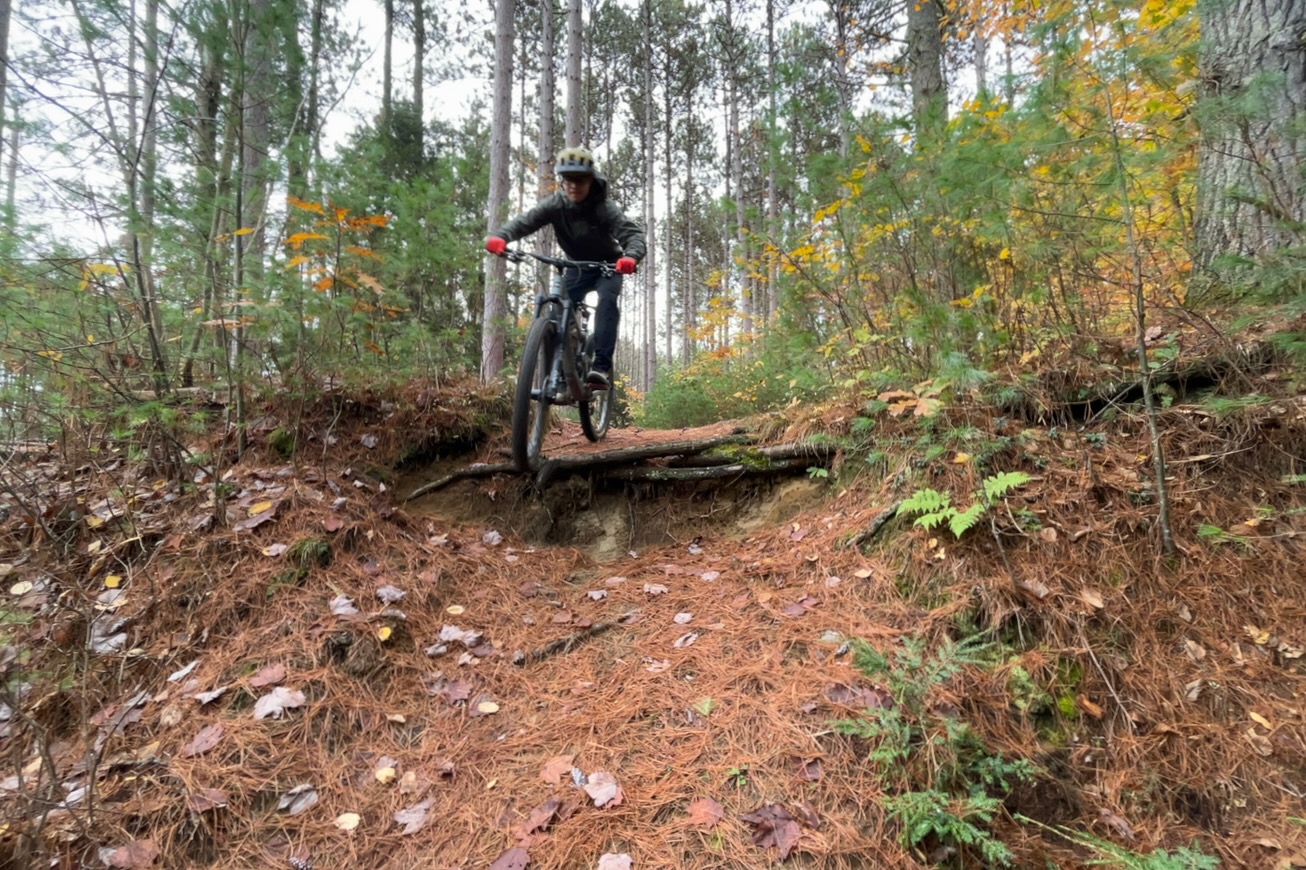

Buying Advice: How to Choose Mountain Bike Gloves
While gloves are a seemingly simple piece of your riding kit, there’s a lot to consider when searching for the right pair. What type of riding do you do, what temperatures or weather are you riding in, and do you need or want added hand protection? Answering those questions will help you narrow down the choices, but you’ll also want to ensure that you get a good fit and the features you want.
Intended Use
The right pair of mountain bike gloves for you depends mainly on your intended use – what type of conditions you are riding in and what level of protection do you need? Given that gloves come in a wide range of styles, there are models purpose-built to suit every need including those made for hot weather, cold weather, protection, and everything in between.
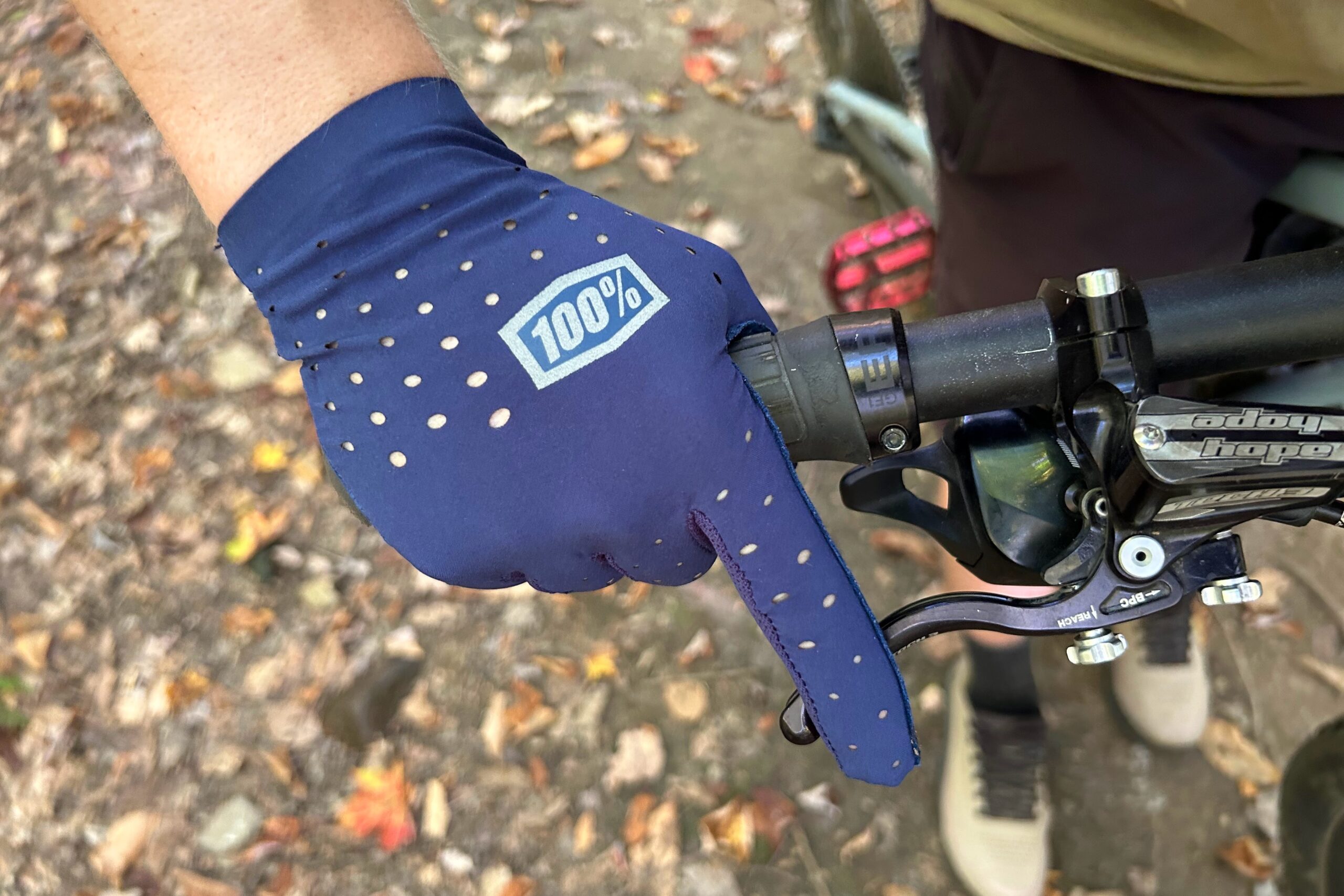

Lightweight
Exceptionally light and breathable gloves are great for warm to hot temperatures, and they essentially provide a thin layer of material between our sweaty hands and grips. This style of glove is often preferred by those who live and ride in hotter climates, ride in the heat of the day, ride at a high intensity, don’t need/want additional knuckle protection, or people who want gloves that barely even feel like they are there.
Made with thin, stretchy materials, this style of glove is typically sleek, low profile, breathes well, and dries quickly, while providing maximum dexterity, tactility, and a natural grip and bar feel. Among the models we tested, the 100% Sling was the lightest, followed closely by the Gorewear TrailKPR, with gloves like the Dakine Covert, Giro DND, Handup Most Days, and Race Face Trigger all just a tad heavier, but still falling on the lightweight and minimalist end of the spectrum.
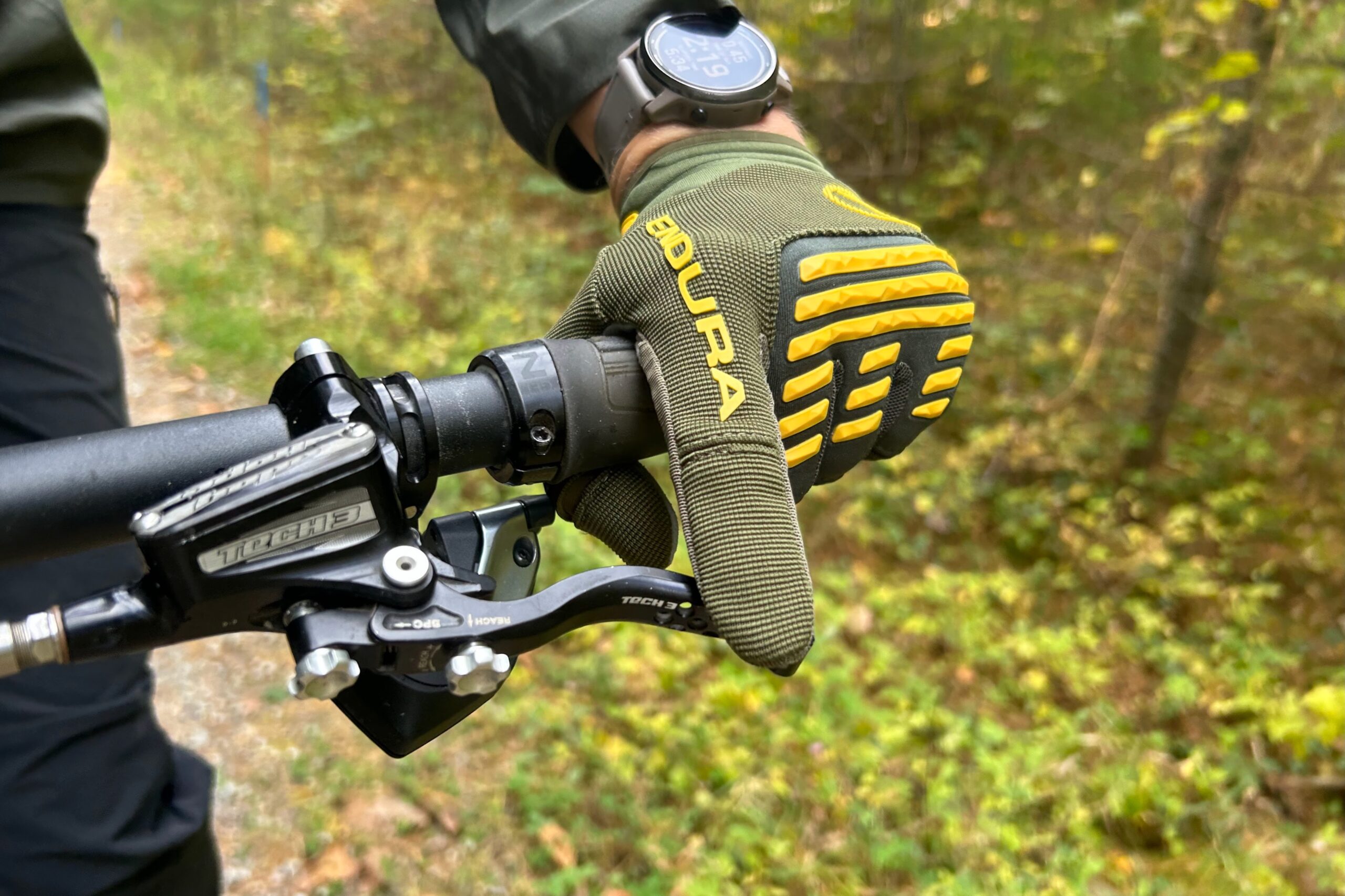

Midweight
Made with slightly thicker materials, midweight gloves are just a little bit heavier than the lightweight options. These thicker materials typically provide marginally more hand protection than the thinner, lighter options, and some feature very light amounts of knuckle protection in the form of TPU or small foam pads.
They also tend to be just a little warmer on the hands, although they still usually breathe fairly well, so they are often a good option for those who ride in more moderate temperatures. Both the Dakine Cross-X and the Endura Singletrack are a prime examples of midweight mountain bike gloves.
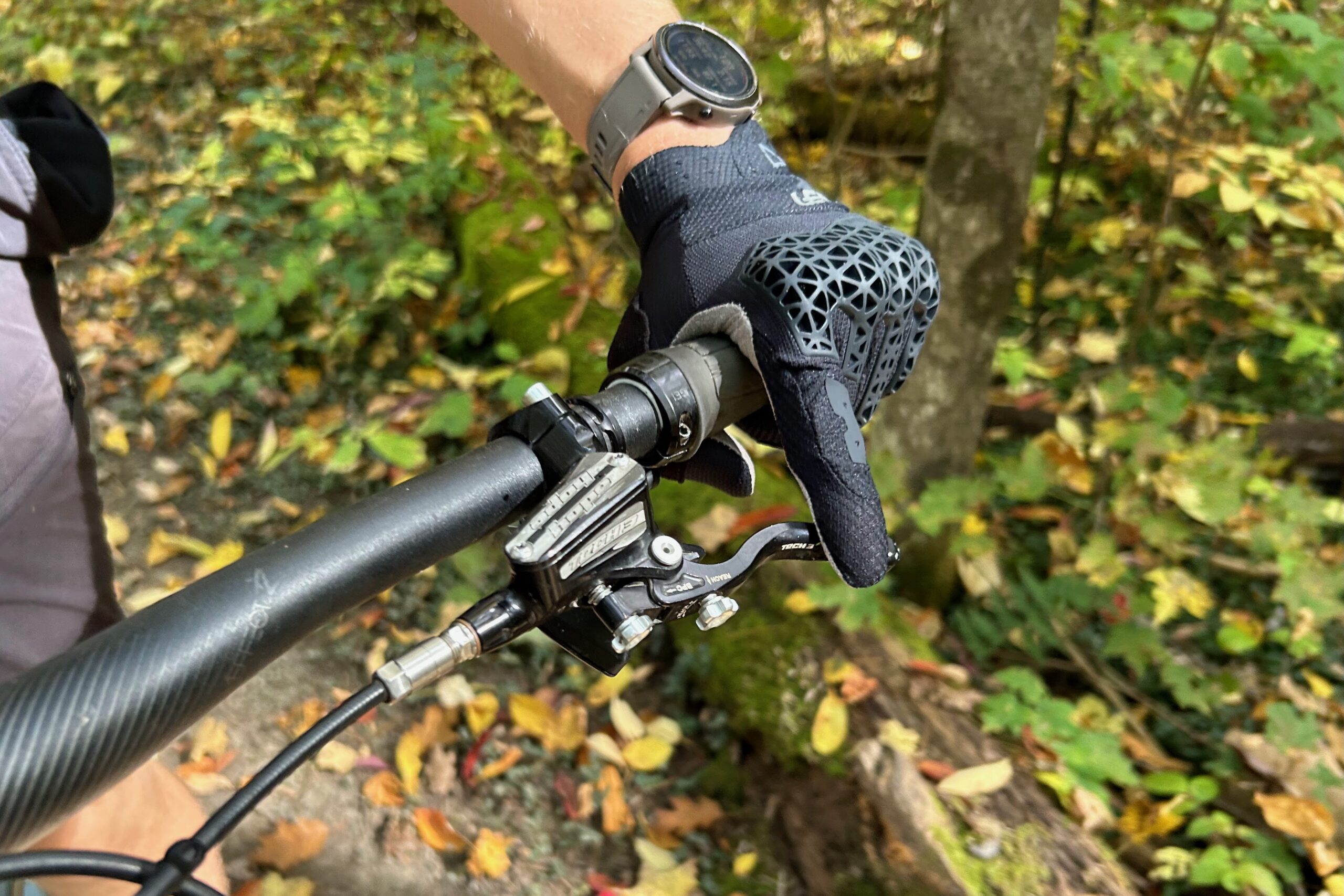

Protective
If you are an aggressive rider or often find yourself on very tight trails, gloves with added protection may be a good way to ensure your knuckles stay safe from trees, bushes, or the ground. Protective gloves generally feature some type of padding built into the back of the glove, covering the knuckles and sometimes extending down the outer fingers or up the back of the hand.
The padding used for protection varies, but D30, Airflex impact gel, foam pads, and TPU patches are commonly used in this style of gloves. While there are limits to the protection provided by these gloves, they all work well to deflect foliage on overgrown trails, absorb smaller impacts like clipping larger branches or trees, and can help to prevent minor injuries like cuts and abrasions.
The Fox Defend D30, Leatt MTB 4.0 Lite, and Endura MT500 D30 are examples of gloves with knuckle protection, but all of them go about it in different ways.
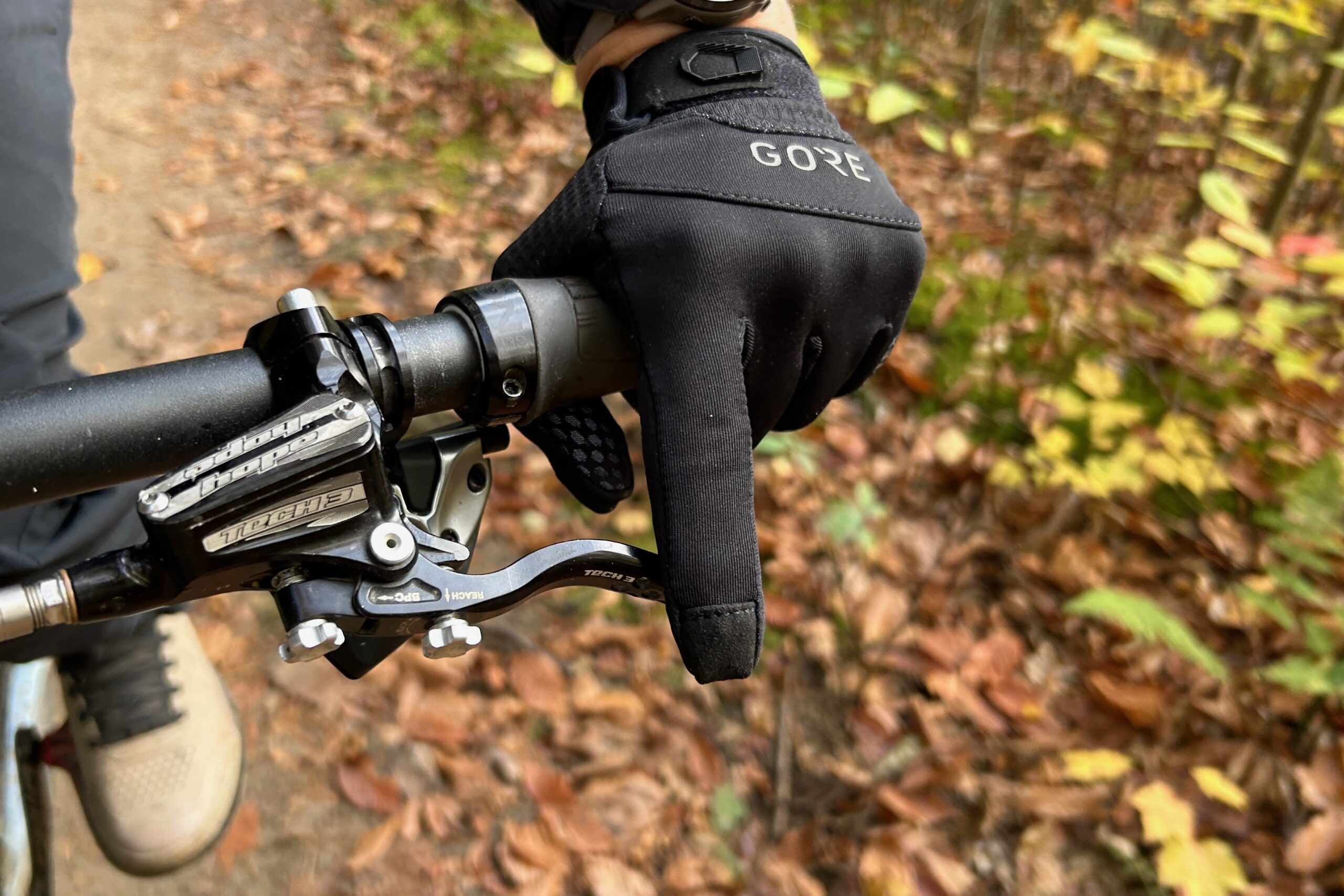

Cool Weather
It’s not always warm outside, and, depending on where you live and ride, often the best riding of the season comes in the cooler months of fall, winter, and spring when the temperatures have dipped, but it isn’t super cold. Fortunately, there are a number of great mountain bike glove options designed for those conditions that are above freezing but are too cold for regular warm-weather gloves.
Often, these gloves use thicker materials like softshell or similar, may include a fleecy insulation layer, and possibly a wind-blocking layer or water-resistant membrane like Gore-Tex Infinium to take the chill out of the wind. Generally speaking, these gloves tend to be only slightly bulkier than regular gloves, so they don’t limit dexterity or impact bar feel like heavier, more insulated gloves can.
Cool-weather gloves are great for those days in the 40° to 50° F degree range, although some can keep you warm slightly above or below that depending on the conditions and intensity of your riding. Gloves like the Gorewear C5 Gore-Tex Infinium, Specialized Trail Thermal, and Fox Ranger Fire are great options for riding in cool weather.
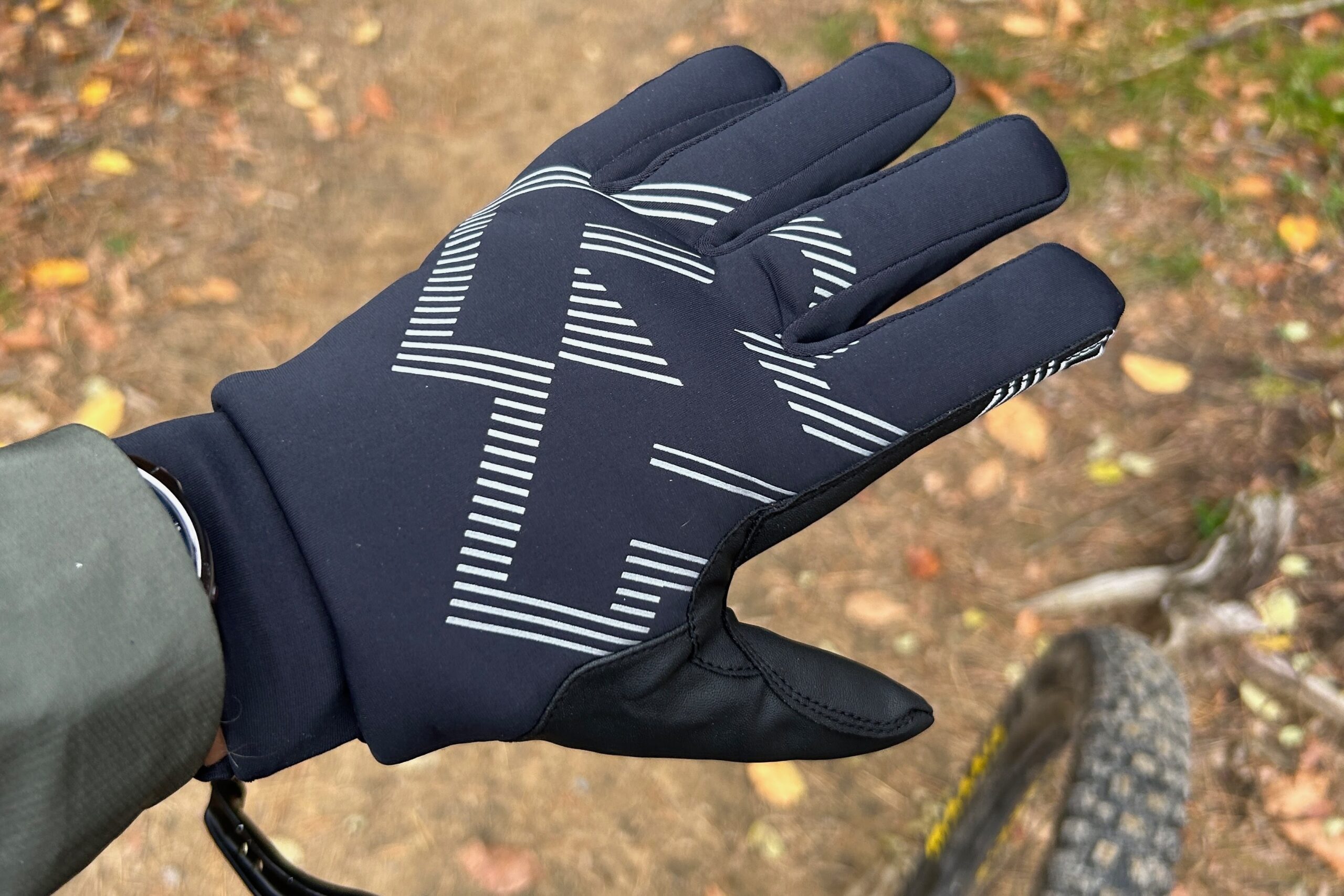

Cold Weather
For temperatures close to or below the freezing mark, a more insulated cold-weather glove is the key to keeping your hands happy while you ride. This style of glove typically includes a wind-blocking layer and/or water-resistant membrane to keep the chill off your hands, along with insulation to surround them in pillowy warmth.
The addition of insulation typically results in an increase of overall bulk, and these gloves tend to sacrifice a bit of dexterity and tactility in exchange for warmth, which is a tradeoff most riders are willing to make in the right conditions. The warmest gloves we tested are the Race Face Conspiracy and the 100% Brisker, with the Conspiracy being the warmer of the two.
Wet Weather
Unfortunately, we didn’t test any dedicated wet weather gloves this time around, but there are lots of waterproof gloves on the market for those who ride in wet conditions regularly. Brands like Gorewear, Fox, 100%, Endura, and others make gloves that can keep your hands dry in the rain. Of the models we tested, some of the cool and cold weather options are highly water-resistant, like the Gore-Wear C5 Gore-Tex Infinium. While not completely waterproof, the Infinium membrane does repel light amounts of water quite effectively.
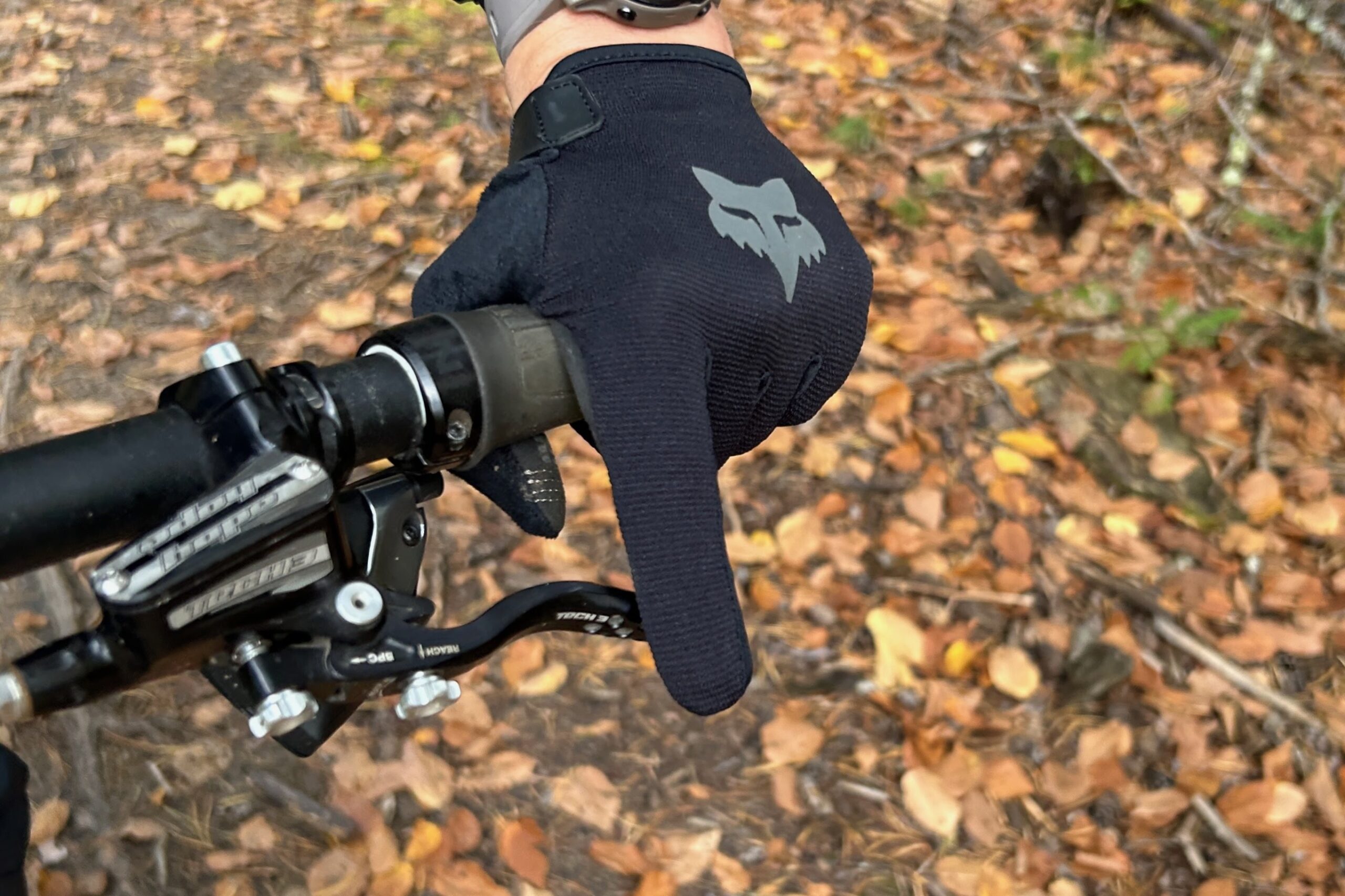

Fit
Getting gloves that fit well is a very important step in the purchase process. Ideally, a well-fitting pair of mountain bike gloves will feel like a second skin that avoids being too tight or excessively loose. Gloves that are too tight may be challenging to put on or the fingers may be too short which may cause discomfort or result in a reduction of dexterity.
Gloves that are too loose will have a sloppy fit that may result in material bunching or your hands moving around in the gloves resulting in a reduction of control. Gloves that fit well should have fingers that are the perfect length and a palm that matches the shape of your hand.
If you already know your mountain bike glove (or other gloves) size you can generally go with that, especially if you’re buying the same brand. There is some variance in sizing between brands, but they are typically in the same ballpark size-wise. If you don’t know your size, head to your local bike shop or outdoor store and try some on to find the right fit.
If that’s not an option, try on some of your friend’s gloves and see what fits best, or take some measurements and reference the brand’s size charts. Most gloves are sold in Alpha sizes represented by letters like S, M, L, etc., and often these sizes are accompanied by the equivalent numerical glove size on size charts, such as 7, 8, 9, etc.
Wrist Cuff
In general, wrist cuff designs fall into two categories, stretch or Velcro closure. Gloves with stretch wrists just get pulled over the hand and the materials generally have enough stretch to allow you to put them on and take them off with relative ease. This style does not offer any adjustability, but it avoids any added bulk at the wrist, and there is no Velcro that can be prone to breaking down over time.
Velcro closures allow the cuff to be opened for easy entry and exit from the gloves while also providing the opportunity to adjust the tension around the wrist. What style works better for you is generally a personal preference, with most riders typically choosing one or the other or sometimes not caring at all.
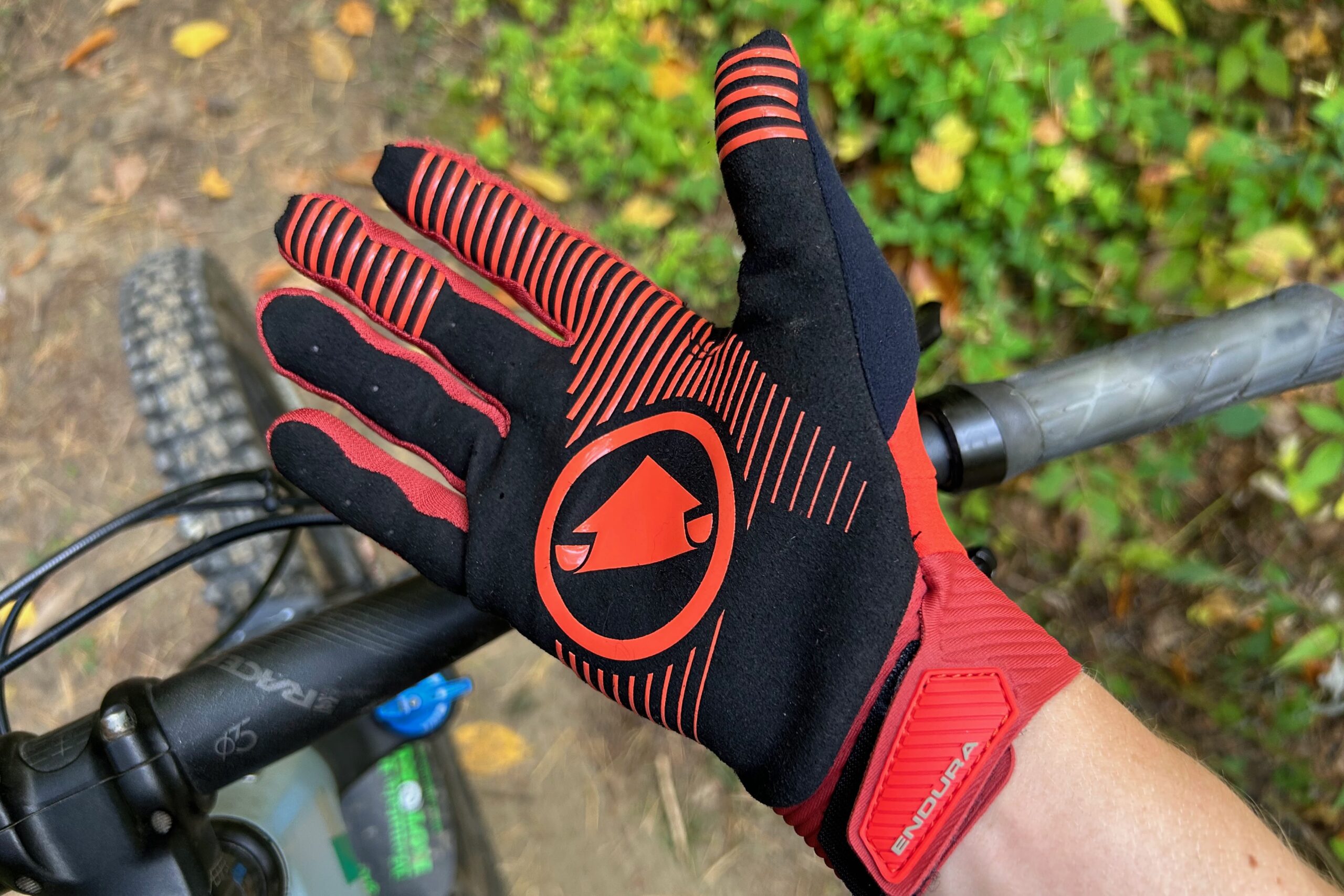

Grip
It is worth considering the level of grip you want from your gloves. While many people seek the most natural bar feel, as close as possible to not wearing gloves, others may enjoy a little extra tackiness and traction. Since the majority of gloves have palms made from similar materials like microfiber or synthetic suede, they typically offer very similar levels of grip on the bars.
Some brands, like Endura, for example, add silicone grip patches to the palms of their gloves, such as the MT500 D30 and Singletrack Glove, that provide an almost sticky feel. While this may not appeal to riders who like to reposition their hands, it does give them a very positive connection to the grips and makes it easier to use a bike multi-tool without taking them off.
Most, but not all, gloves have some silicone texture added to the tips of the pointer finger and often the thumb and middle fingers as well. This can add to the bar grip a little, but mostly it serves to add traction on your brake levers and shifter paddles. While it isn’t completely necessary, we feel it is a nice feature to keep your fingers and/or thumbs from sliding off when braking, shifting, or lowering your dropper while you ride.
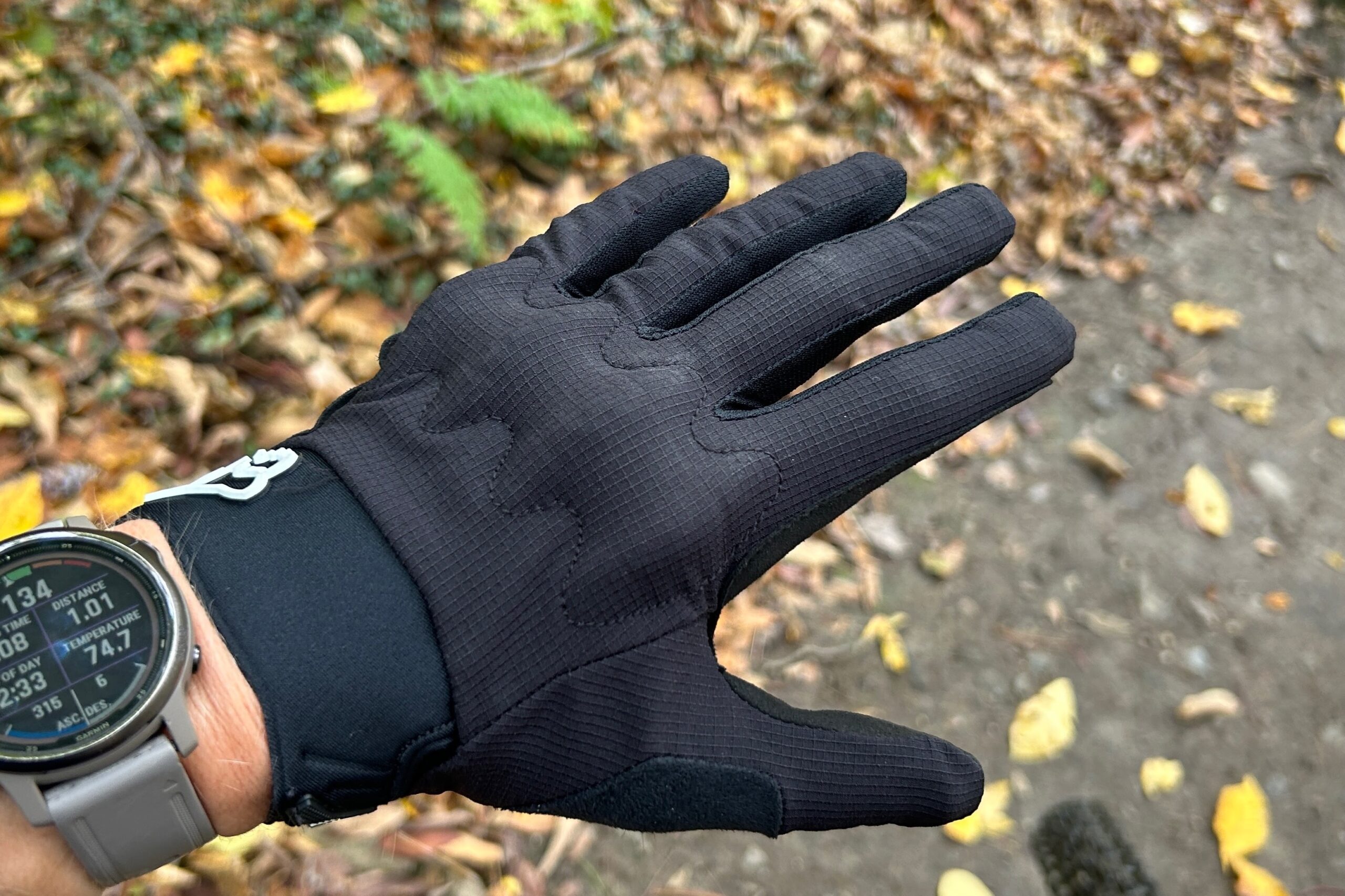

Knuckle Protection
Any mountain bike glove provides more protection for the hands than not wearing any gloves at all, but downhill, enduro, and aggressive trail riders often opt for gloves with knuckle padding. Whether for added protection for crashes or fending off impacts from trailside obstacles, a little padding can help prevent cuts, abrasions, and possibly even broken knuckles.
These protective features typically consist of impact-absorbing pads integrated into the construction of the gloves providing protection for the knuckles and sometimes the outer fingers and/or the outer metacarpal. The designs, materials, and levels of protection used in protective gloves vary, but many use D30 which is an impact-absorbing material that is flexible and stiffens upon impact.
Both the Endura MT500 D30 and the Fox Defend D30 use, not surprisingly, D30 padding, though they use it in different ways. Some brands use their own padding, like the Leatt MTB 4.0 Lite which has a large panel of Leatt’s proprietary Airflex impact gel that works in much the same way. Since protection needs vary, other models have just a moderate level of protection like the Endura Singletrack gloves that feature thin strips of TPU across the outer three knuckles.
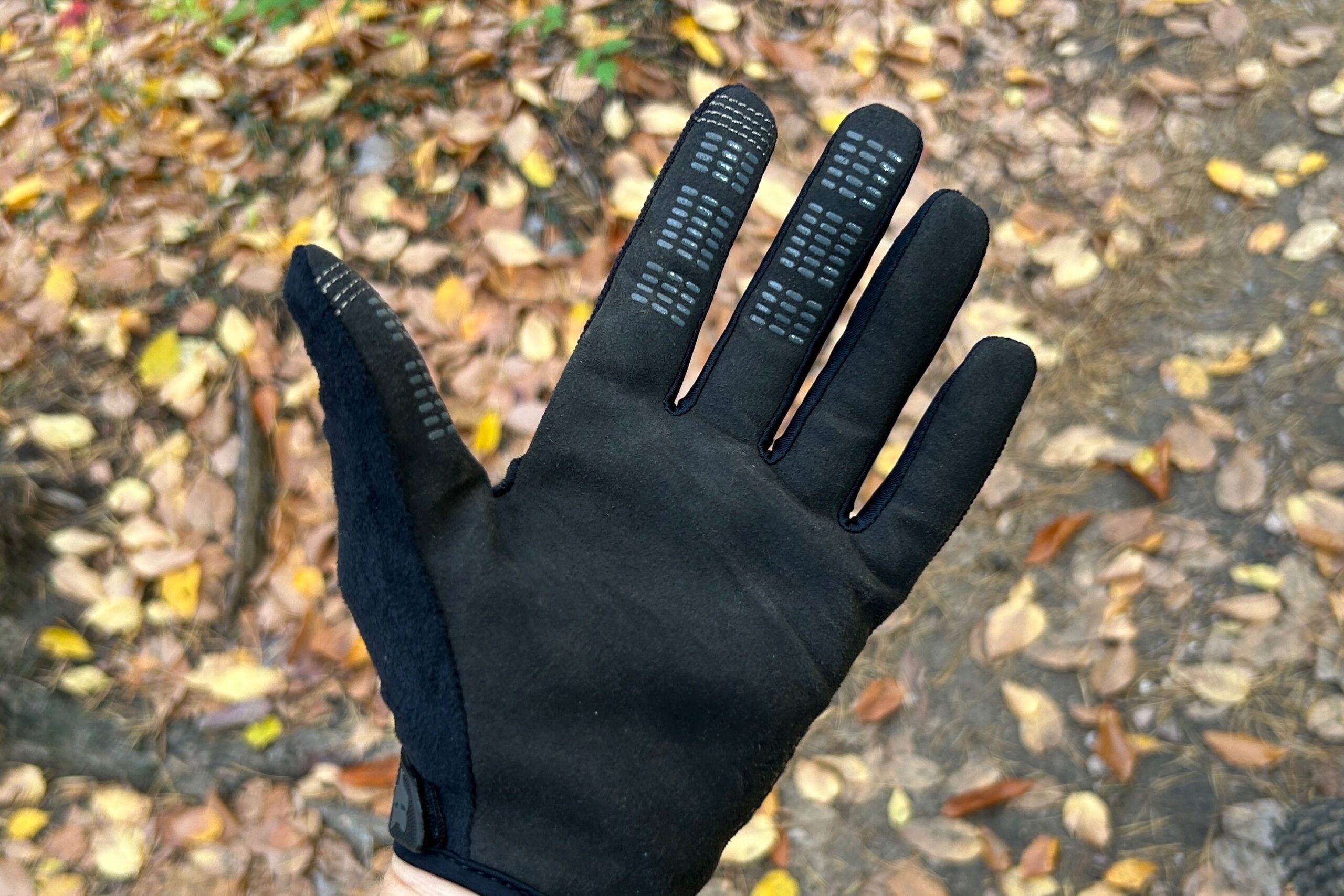

Touchscreen Compatibility
With the proliferation of touchscreens on virtually everyone’s phones these days, glove manufacturers are doing their best to make gloves that work on those screens. Whether for responding to a text, checking Trailforks, or grabbing sick photos of your friends riding, it’s a nice feature to have.
Conduction threads are the most common, and these small threads are typically sewn into the tips of the pointer finger and thumb. Some gloves use small touchscreen-friendly panels of material, while others have palm materials so thin that work fine without any special stitching or materials.
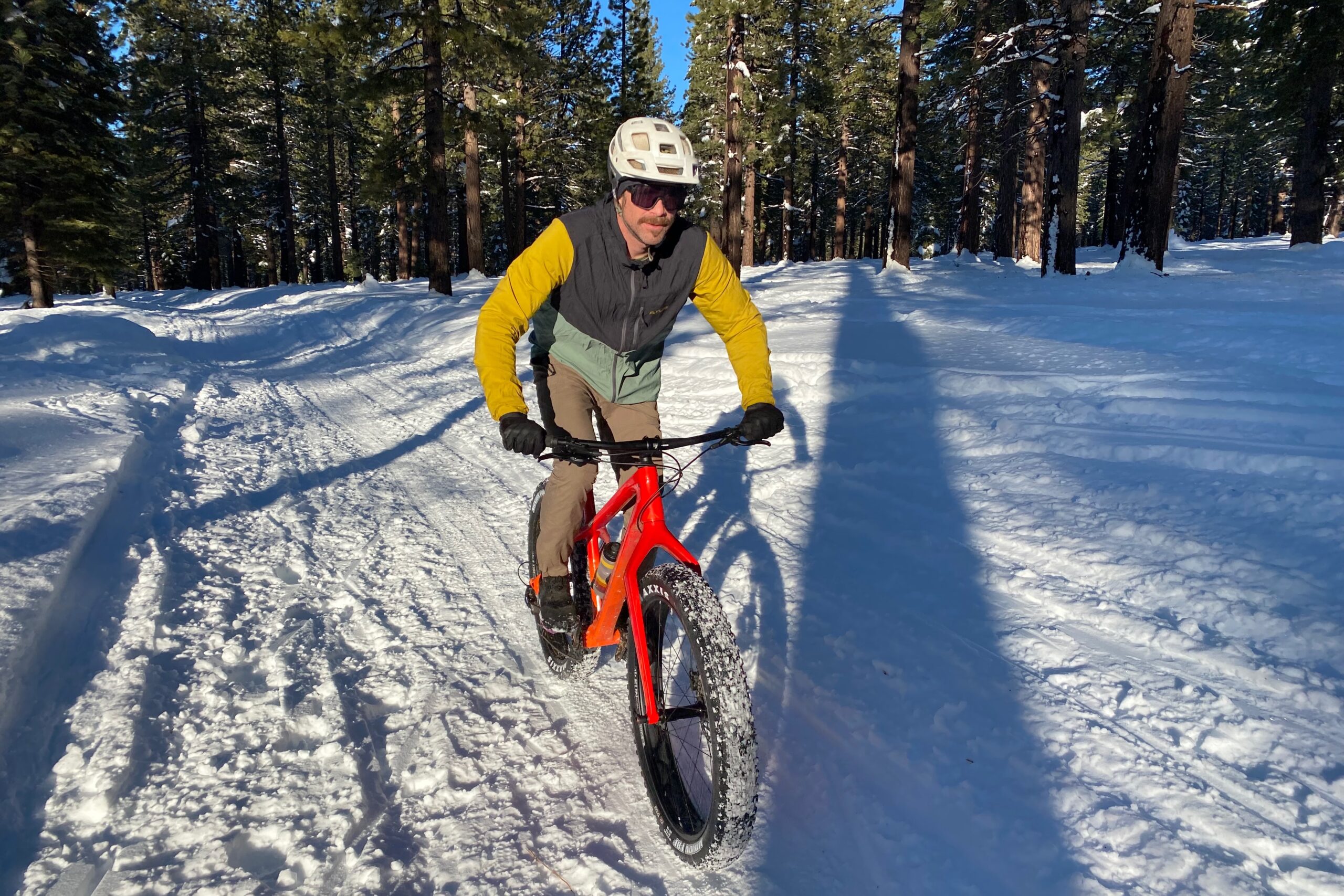

Insulation
If you ride in the fall, winter, or spring, having a pair of gloves that keeps your hands warm may be the difference between a great ride and a miserable experience. Since temperatures vary, glove manufacturers make a wide range of cool and cold weather gloves to suit those varying conditions.
The vast majority of mountain bikers don’t ride in temperatures below freezing, so thankfully there are plenty of great lightly insulated and wind-blocking gloves on the market that are well suited to cool temperatures above the freezing mark. These gloves typically avoid the bulk of more heavily insulated gloves and allow for good dexterity and a relatively “normal” fit and feel on the bike.
The Gorewear C5 Gore-Tex Infinium, Specialized Trail Thermal, and the Fox Ranger Fire all fall into the cool weather category. All of these gloves will take the edge off cool temperatures where regular gloves don’t quite cut it.
For truly cold conditions below freezing, wind-blocking materials are typically combined with thicker insulation to keep the hands toasty. In general, the warmer the gloves, the thicker the insulation, which results in more bulk and a reduction in dexterity. That said, when keeping your hands from freezing is the priority, that’s an easy sacrifice to make. The warmest glove we tested is the Race Face Conspiracy with the 100% Brisker just a bit behind.
Value
In the grand scheme of things, mountain gloves are one of the least expensive accessories in the sport. General-purpose riding gloves typically cost around $30 on the lower end, so picking up a new pair every season or two is a fairly easy pill to swallow. Once you start adding features like knuckle protection, windproof materials, or insulation, the price tends to go up a bit.
Of the gloves we tested, we feel the Fox Defend D30.
Among the cool weather options, the Specialized Trail Thermal and Fox Ranger Fire are both solid values with prices of $40 and $45, respectively. It’s also worth noting that gloves can often be found at discounted prices, and online retailers will often have last year’s colors or graphics on sale for less than full retail.
Frequently Asked Questions About Mountain Bike Gloves
While some riders prefer not to wear gloves while mountain biking for the ultimate connection to their handlebars, most riders choose to wear them for a variety of reasons. First, gloves put a thin layer of material between the hands and grips that manages moisture and prevents sweaty palms from slipping while reducing friction and callous buildup.
Second, gloves provide a layer of protection for the palms if/when you crash. Third, gloves provide protection for the top of the hands from sun and brushes with trailside obstacles like bushes and tree bark. Thicker materials and padded gloves provide even more protection for the knuckles and may help prevent cuts, abrasions, or worse.
Sure, you can ride in any old gloves you want, but we always recommend riding in mountain bike-specific gloves for the precise, articulated fit and bike-specific features that make them better suited to the task.
By considering the type of riding you do and the temperatures and conditions you ride in regularly, you should be able to zero in on the type of gloves that you need. For most riders, a single pair of versatile gloves will probably do the trick for the vast majority of their riding.
For others, it might make the most sense to have multiple pairs of gloves to cover them for different riding scenarios or weather conditions. Fortunately, mountain bike gloves are among the least expensive accessories, so it isn’t cost-prohibitive to have several pairs, depending on your budget, of course.
Most mountain bike gloves these days attempt to work with touchscreens. The methods vary, but conduction threads stitched into the thumb and fingertips are probably the most common, while others use small patches of touchscreen-friendly materials instead. While they asll mostly work with screens, the effectiveness of these features varies and often is a function of the thickness of the gloves.
Nearly all gloves with built-in touchscreen features will work to wake up your screen, and some will even work to type texts and take photos. The thicker the material or bulkier the gloves, however, the less precise your fingers become on the screen. While some gloves work just as well as your bare hand, it will be a lot easier to take your hands out of others to properly use your phone.
If you already know what size you wear in other gloves, it’s often as simple as getting the same size for mountain bike gloves. This isn’t always the case, however, as we want our riding gloves to have a snug, slop-free fit for the best bar feel and maximum control.
If you don’t know your size already, take some measurements and check the size charts on brand websites. Better yet, head to your local bike shop and try on different sizes to find your perfect fit and buy them there. They’ll be glad you stopped in.
Whether from wiping your nose or sweaty head, crashing in the dirt, riding in a dust cloud, or simply sweating in them, mountain bike gloves get really dirty. So, it’s important to wash them regularly to keep them smelling and looking fresh and keep bacteria at bay. Most gloves can be washed in a washing machine, although many people prefer to hand wash them.
If using a machine, it is generally best to wash them in cold water and ensure that any Velcro tabs are closed so they don’t snag on any other clothing or pick up lint in the process. Putting them through a dryer can have adverse effects on silicone grippers or knuckle padding, so we always recommend hanging them to dry. Of course, there are other methods, but we’ve never had an issue running our gloves through the washing machine for regular cleaning.

















